

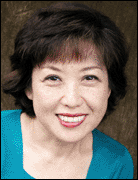
Local Color![]()
Sunday, February 10, 2002
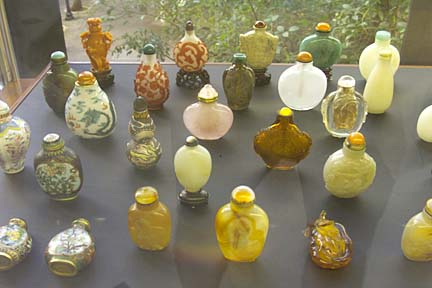
|
To the uninitiated, the small flower vase in Phuong Tran's hands appears to be just another one of Chinatown's ubiquitous cut-rate blue-and-white porcelain ware. Its potbelly base is balanced with a long slender neck -- a simple container for display of a single blossom. Imperial porcelain provides
a path to appreciate the past"If you know what to look for, you'll know this is not just any flower vase," says Tran, artist, collector and connoisseur of Asian antiques.
"It's not the kind of ceramics made for export. This is very, very fine quality made by people who really knew what they were doing. You know, not just anybody could make bowls and pots for the emperor of China."
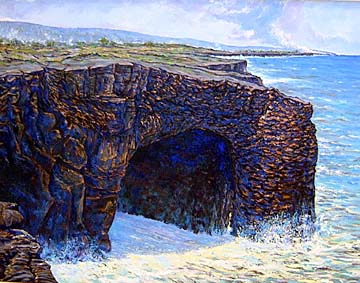
|
The dragon motif -- reserved for the imperial household -- may give a hint to the vase's uncommon heritage. But that's not the only sign, says Tran, who is exhibiting some of his imperial porcelain in the lobby gallery of 1132 Bishop St."Legend of the Dragon" includes cinnabar boxes, gold lacquer ware, celadon vessels, jewelry, snuff bottles and other artifacts from his collection of Chinese and Vietnamese antiques. Tran also is showing his own paintings of Hawaiian landscapes in the exhibition, which runs through March 1.
When examining objects of art, a trained eye is indispensable, Tran says. While he has far grander blue-and-white porcelain vessels in the exhibition, he uses a modest flower vase to illustrate the unsurpassed quality of Chinese imperial porcelain.
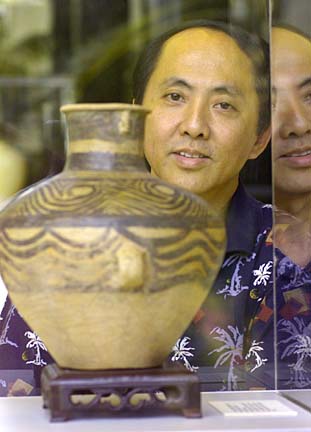
|
Tran points out the pure white of the porcelain -- "really, really white," he emphasizes. The blue glaze is a rich indigo blue -- "only the best, deep blue color" that doesn't fade with age or use.The most telling detail is in the application of the decorative blue glaze. While forgers can easily copy designs and signature seal marks, they simply cannot match artisans whose painterly skills gained them the royal commissions.
"The brush strokes -- that's what really tells you about the quality of the piece," Tran says, pointing out that even for a humble flower vase, the nameless artisan took great care in its creation.
"The brush is always centered. The brush stroke is always strong, from beginning to end. The stroke is smooth and focused," he says.
A trained eye can spot the subtle change from a dark tone in the center of the stroke to a lighter tone along the edge of the stroke. The differentiation indicates that the brush was "centered," meaning it was held upright, perpendicular to the surface being decorated.
"It's not important how much you have or what you have. It's important that you maintain and take care of them and share them with other people. That's how you can keep the history and culture alive." Phuong Tran
Asian antique collector
A line of blue glaze may be as fine as a strand of hair, but it was always applied with boldness. The force of the brush stroke is apparent in the ball-like ends of each line. Forged pieces often have the rounded ends, Tran says, but the brush strokes do not carry the same vigorous energy seen in authentic imperial porcelain.
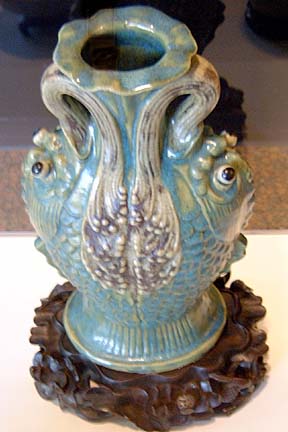
|
"The people who made the porcelain were very important people. They were the best. They knew how to control every technique. Nothing is an accident," says Tran.The artisans also were well educated, and the words they chose for decorations were never the common auspicious Chinese sayings. The words also are important indicators of authenticity.
"Everybody can copy the dragon design, but not everybody can copy everything else," Tran says.
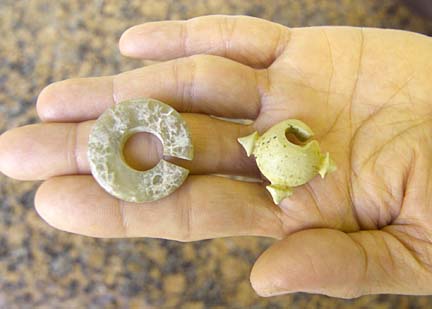
|
Knowing the finer points of imperial porcelain, or other Chinese and Vietnamese antiques, is a way for him to connect with his heritage, Tran says. He was born in Saigon to a wealthy and respected Chinese family who fled southern China to avoid the political turbulence leading up to World War II. The family was forced to flee Vietnam when Saigon fell to the communists.After a long and difficult escape, Tran, the youngest of 11 children, settled in Hawaii in 1979. Family members joined him later, and they were able to arrange to have the family's antique collection shipped here. After his parents' deaths, the collection was dispersed among the children.
"I really appreciate the antiques from my family. It tells me where I came from. I grew up both Chinese and Vietnamese," Tran says.
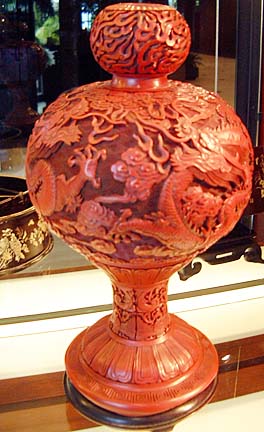
|
He has added to the family heritage and regards collecting antiques as a serious hobby."I didn't always appreciate what I had. I was terrible when I was a child," says Tran, recalling antique bowls as common in his household and employed for everyday use.
He remembers becoming annoyed by bowls that didn't appeal to his artistic eye. When bowls developed cracks, they were patched with thin strips of sterling silver rather than thrown away. He broke them on purpose, forcing the adults to discard valuable imperial porcelain.
Art and Artifacts from Vietnam and China Legend of the Dragon:
Place: Lobby of 1132 Bishop St.
Time: 6:30 a.m. to 6:30 p.m. Mondays t0 Fridays, and 8 a.m. to 2 p.m. Saturdays, through March 1
Admission: Free
Call: 599-5009
"I don't dare do that now," Tran says, "It's not important how much you have or what you have. It's important that you maintain and take care of them and share them with other people. That's how you can keep the history and culture alive."
Gardening Calendar
Suzanne Tswei's art column runs Sundays in Today.
You can write her at the Star-Bulletin,
500 Ala Moana, Suite 7-210, Honolulu, HI, 96813
or email stswei@starbulletin.com